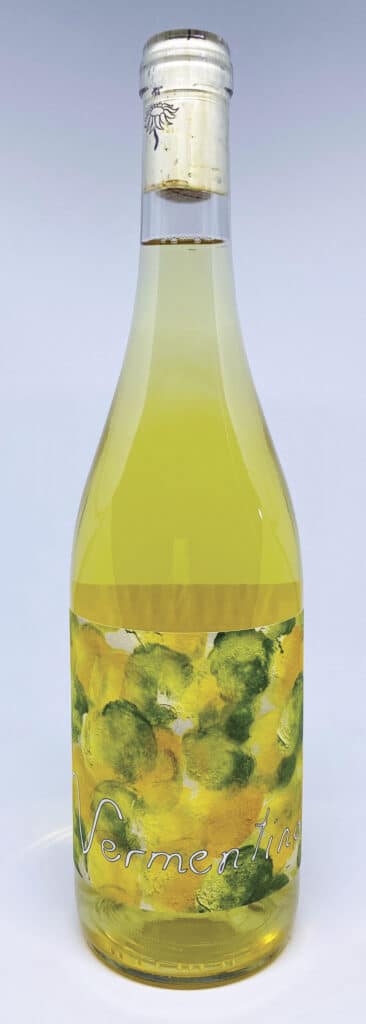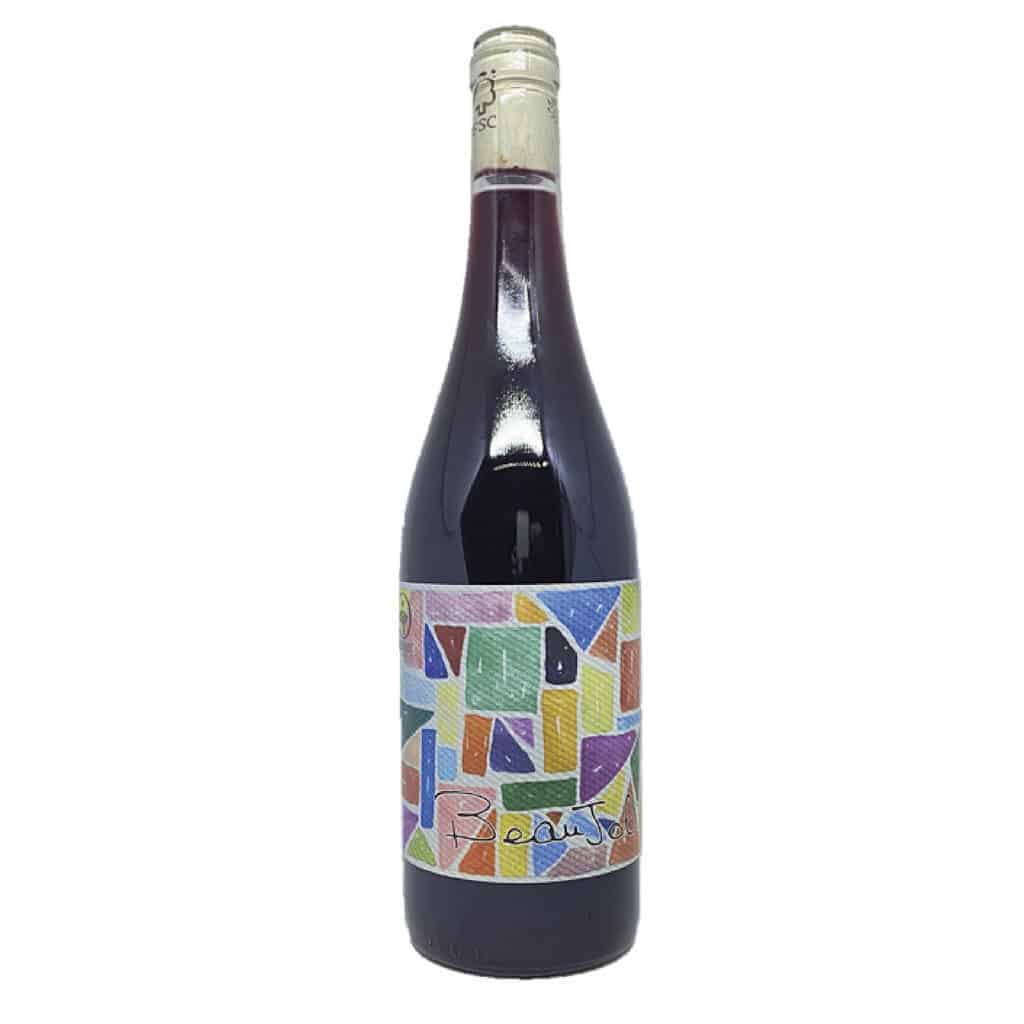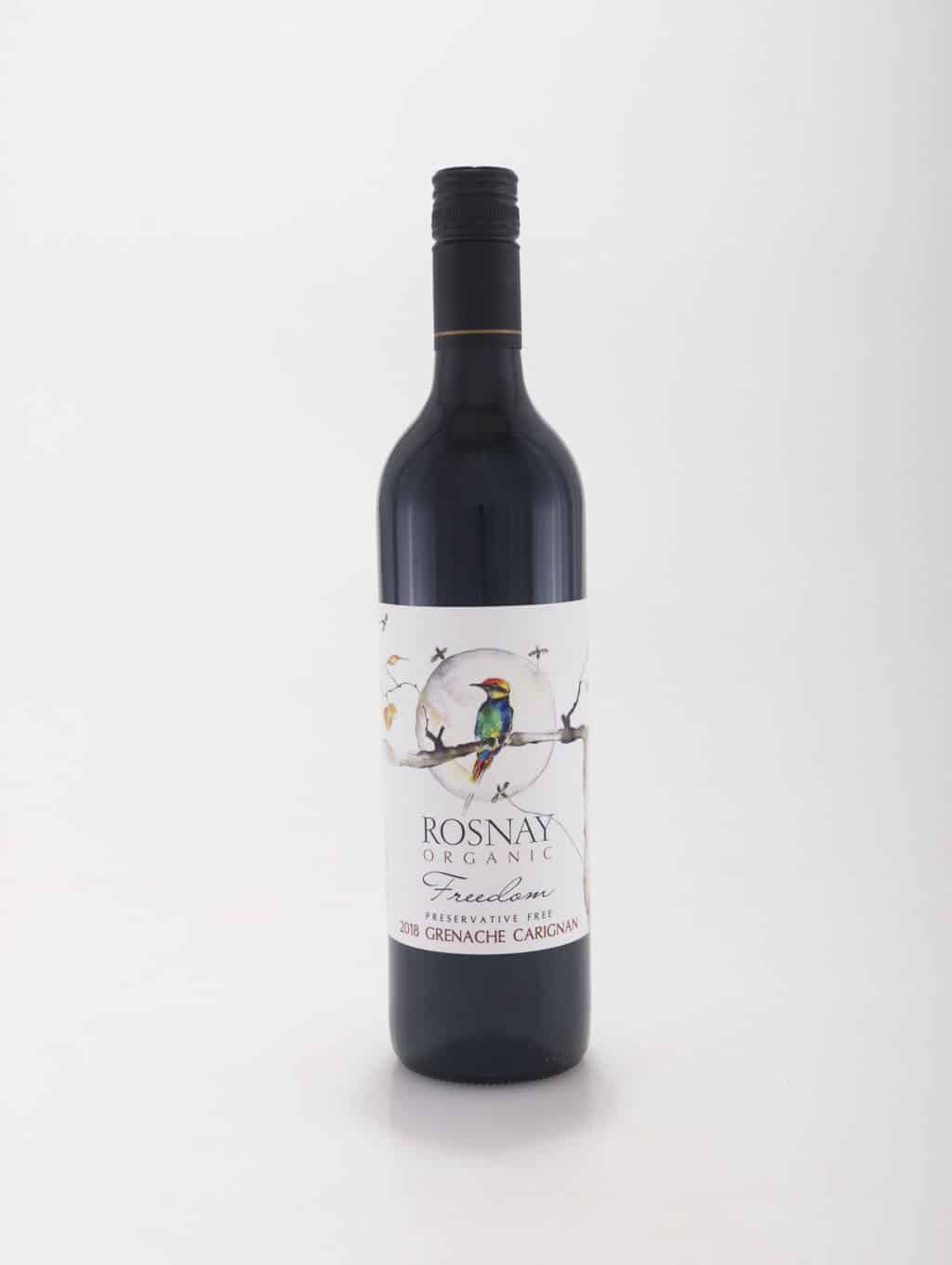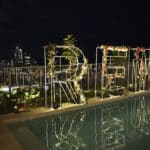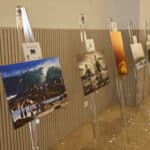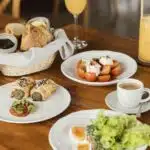WINE
The Purity of ROSNAY!
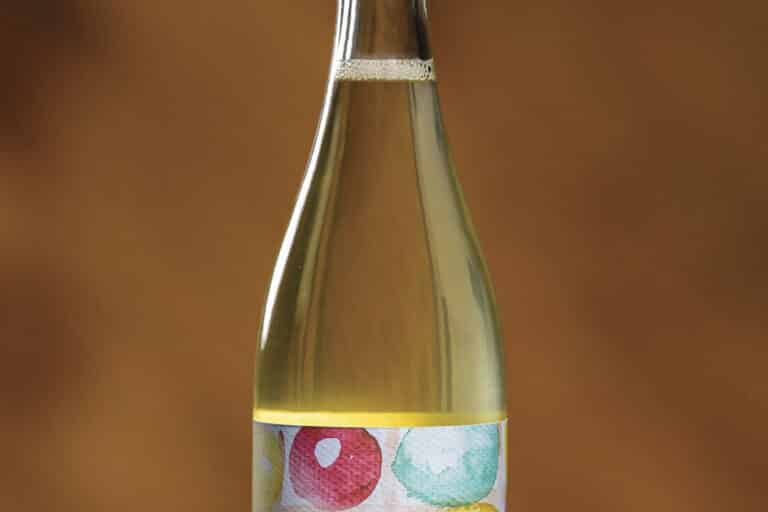
WORDS: Peter Panousis - Peter Pan Wines PHOTOGRAPHY Supplied
Three hundred kilometres west of Sydney you will find the township of Cowra, a town known for the largest Prisoner of War compound in Australia during World War 2. The camp later became famous for the Great Cowra Breakout of 1944 where prisoners of war escaped from the camp thus making it the largest prisoner breakout in world military history. Thankfully now, Cowra is home to some of the best wine tasting experiences in NSW and also boasting its 40 year old wine show. Close by is the small town of Canowindra and home to Rosnay wines.
Where is Canowindra
Canowindra lies 307 km west of Sydney via Bathurst. It is 34 km north of Cowra and around 50 miles south of Orange. The area has elevations of approximately 300 m above sea-level and much of the land is home to organic farming. The name Canowindra’ is a Wiradjuri Aboriginal word meaning either “home” or “camping place”. Canowindra proudly describes itself as ‘The Balloon Capital of Australia’. It is an ideal location known for its gentle winds and open countryside.
The town was surveyed in 1860 but was first settled in 1840’s making it an early pioneer town with both historic roots and milestones. Currently the town is home to around 3000 inhabitants and is approximately 765.7 square kilometres in size. It has 3 parks covering nearly 9% of total area with approximately eight cellar doors.
Canowindra is considered to be part of the Cowra wine region which is a sub-area of the Central Ranges wine zone. Cowra is the southernmost, lowest altitude and warmest of the three regions in the Central Ranges zone. Vineyards began to be planted from 1973, and are predominantly irrigated. The region is about 1,250 square kilometres in size and offers a number of specialist organic and sustainable agriculture vineyards. Enter organic farming.
Defining Organic
Specifically, Wine Australia defines organic viticulture and wine making as “Grapes grown and processed using no synthetic or artificial additives, chemicals, herbicides, pesticides, fertilizers or genetically modified products or organisms”. Organically farmed vineyards also rely on natural treatments or homeopathic type treatments to treat the soil and plants. In short, the saying is “if you are good to the land, plants and livestock” farms will flourish.
Organic wine may contain preservatives like Sulphur. However, Sulphur dioxide (preservative 220) quite often occurs naturally in wine production. Further, in both organic and biodynamic wine added sulphur is permissible but is kept exceptionally low with levels ranging from 25 – 75 parts per million (ppm) sometimes higher but not as high as non-organic/biodynamic wines which may have up to 500 ppm or more in wine. The use of added sulphur in wine is always a bit controversial but many naturally dried health food fruits and foods for example contain much more sulphur than wine. Some dried fruits may contain as much as 3000 ppm. The addition of Sulphur is not a new fad in wine making, but rather it has been used over thousands of years to protect wines against spoilage.
Also Organic wines are not always vegan friendly but many are. On the other hand, there are many non-organic wines which are vegan. Vegan friendly wine making techniques may use clay or charcoal rather than animal products to remove the cloudy haze by capturing all the particles and dropping them to the bottom of the tank instead of using animal products. For example, many non-vegan wines may use agents such as fish bladder proteins, egg whites (like chefs use to clarify consommé soup) or other animal proteins to remove the cloudy haze in wine. Another technique is to not filter or fine the wine at all thus leaving the wine cloudy and of course vegan friendly.
True organically made wines will illustrate certification on the bottle. Certified organic wines follow strict rules and guidelines and are only certified after a 3 year assessment period. Once certified a vineyard is assessed yearly in order to retain certification. A recent article written by Daniel Honen and appearing in the Guardian states “There are two prominent organic certifying bodies in Australia that most winegrowers will use to prove that their wine is organic. These are Australian Certified Organic (ACO) and the National Association for Sustainable Agriculture, Australia (NASAA). Look out for the particular certifying body’s logo, which, in most cases, will be printed somewhere on the wine label but usually on the back. This is your assurance that what you’re drinking is actually organic.” Certification can be costly especially for small producers, but hats off to the wineries that meet both the rigors and costs of certification. Look for either one of the logos and take comfort in knowing they are genuine organically certified wines. Also be mindful that organic/biodynamic certifying bodies and their logos will be different in other countries however the assurance is there on the label. Enter Rosnay Wines.
Rosnay
Rosnay is Canowindra’s first organic vineyard and farm, and is only just eight kilometres from the centre of town. The farm was established in 1977 by Richard and Florence Statham and their sons Sam, Nick and Oliver. Rosnay produces certified organic wines, olives, and figs and the vines and orchards have never been sprayed with harmful chemicals, a passion that began with Richard’s father Clive Statham. The farm is 34ha and consists of over 20ha of grapes, 10ha or 2500 olive trees and 120 fig trees. The grape varieties grown include Shiraz, Cabernet, Chardonnay, Semillon, Grenache, Carignan, Vermentino and Mourvedre.
The Rosnay story began in the early 1900’s in a vineyard in Beaujolais France which was owned by Florence’s grandfather, Alberic Dulong de Rosnay after whom the farm is named. Florence migrated to Australia in the 1970’s to marry Richard Statham. Richard’s father Clive was also a pioneer of organic gardening and his enthusiasm for natural growing rubbed off onto Richard and then onto Richard and Florence’s own children. By 2014 they made their first “Garage” wines on site. In 2018 they built a dedicated straw bale winery on the property. In recognition of their work, the Statham’s were awarded the inaugural NSW Organic Pioneers’ Award by the NSW Government in 2012. They also won the NSW Landcare Award in 2015 and Winestate Magazine Organic Wine of the Year award in 2016. After many years of watching the winemaking Sam the son, took over winemaking making his first garage wine and winning the Organic Wine of the Year for his Cowra Cabernet Sauvignon 2014.
By 2022 all Rosnay wines are organically certified, fermented with wild yeast, and bottled with no fining agents added, or filtration to strip the wine of its true character. Having grown organic grapes for decades, the families focus is on making delicious wines using zero additives with no preservatives. Further, Sam prefers to use “wild yeast” meaning the fermentation is achieved through the 500-or-so strains of yeast that occur naturally on the skin of organic grapes. Also, all the wines are made without fining agents. Traditionally, fining agents are animal proteins: milk, egg, isinglass or gelatine, and in French they are called “colle”, which means “glue”. Proteins added to wine (as well as other minerals such as bentonite or charcoal) stick like glue to certain flavours and binding them, before sinking to the bottom of the barrel or tank and being “racked off” the wine (hence technically not an “additive”). Many wineries now use “vegan” fining proteins derived from peas, potato. The winery also uses minimum to no oak treatment of the wines thus allowing the wines to truly express terroir or sense of place. Any oak used is mainly old and large format around 300-600 litres in size, and is considered “neutral”.
Finally what to drink
Try Rosnay’s “Pétillant Naturel” a sparkling but not just any sparkling. Rosnay make two delightful Pét Nats, a Chardonnay based one and the other made from Shiraz. Pétillant-naturale or pét-nat as it is affectionately known amongst the cool cats pre-dates Champagne receiving much attention in recent years. Here, wine is bottled prior to fermentation where the fizz is created by the natural sugars left in the ferment (around 15 grams per litre in this case). The wine is crown sealed with no filtering or fining or added dosage thus making the wine cloudy and as natural as you can get. Once the Chardonnay juice starts to ferment its kept chilled just enough to keep the yeast cells alive and sink to the bottom of the stainless steel tank and then bottled. “The wine continued to ferment in the bottle and was left “on lees” (yeast cells) for 3 months, before the bottles are “riddled” to get the lees to settle into the top of the bottle. After, another 2 months, and the wine was “disgorged” (removing the lees) and labelled.” The wine is vibrant fruity and spritzy with no sulphites, added yeast, fining agents or any other additives and low in alcohol. Easy drinking and refreshing, this wine pairs will on its own or with fried and or salty foods.
The Rosnay Vin de Garage “Skin Contact” white is a goodie and worth a try. Made from 85% Chardonnay and 15% Vermentino the wine is fermented on skins in a ceramic egg for 80 days thus creating both colour and texture without the use of oak. Using a ceramic egg adds minerality, a richer texture and keeps the wine rolling so there are no dead spots thus providing complexity, a more homogenous ferment and also encouraging vibrant fruit characters as well as balance and mid-weight viscosity. This wine has plenty of green apple and citrus notes on the nose, while the palate is soft yet zingy and savoury. As with the other “garage” wines, this is made with wild yeast fermentation, no fining, preservative free and bottled under cork. The wine is low in alcohol too at around 10% and is totally smashable. A wine is to be enjoyed with grilled fish or other seafoods but try it with roast pork.
Another Rosnay is from their Freedom range – try their Grenache-Shiraz-Mourvedre (“GSM”). Made with equal amounts of Grenache and Shiraz of around 35% each, with the remaining being Mourvedre providing both the earthy notes and soft tannins on the finish. It’s a classic southern French style with a ripe sweet nose of plum and cherry, deep in colour and a silky mouthfeel. The wine is matured briefly in both old oak and steel tank to maintain freshness receiving zero sulphites no fining and a minimum of filtration. The wine is juicy and will pair well with BBQ meat or a roast Lamb dinner.
Finally, a must try wine and is from their Garage Series is the Rosnay Beau-jolis. A wine made using Carbonic Maceration fermentation where whole grapes are placed in vessel or tank under pressure using carbon dioxide gas before the grapes are crushed. This process ferments the juice while still inside the grape causing the grapes to explode thus producing wines with intense fruity notes, low tannins and a simple palate structure. This is an easy drinking light style wine made from Shiraz, Mourvedre, and Grenache and can be served chilled like a Beaujolais. The wine receives no oak treatment and with no fining filtering or sulphite treatments. This wine will pair will with Thai food, assorted cheeses and or charcuterie.
About the author
Enjoy and happy but safe drinking. You can catch Peter on Facebook and on Twitter & Instagram as @peterpanwine. About the author: Peter Panousis is a Fine Wine Consultant has worked for leading wine companies for over 17 years. Raised on the Gold Coast Peter has operated many restaurants and cafes and is formally educated with a Degree in Hospitality Management, and he eventually owned two award winning restaurants. Peter has completed a Master’s degree and a Certificate IV in Adult Training. In wine, Peter is WSET trained and certified and has undertaken extensive wine education courses. He is also a former Member of ASVO (The Australian Society of Viticulture and Oenology), and a former Associate Fellow of AIM (Australian Institute of Management).


